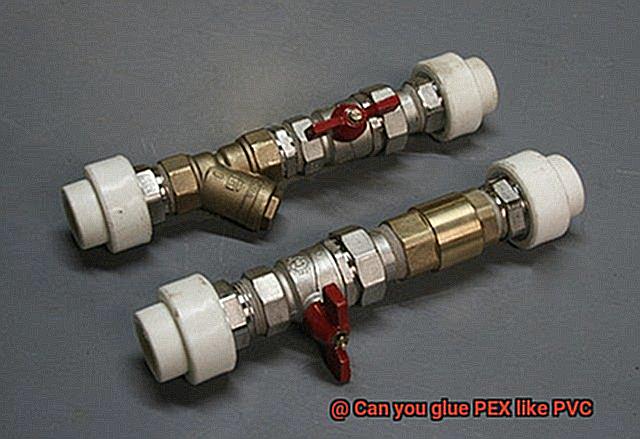Picture this: you’re knee-deep in a plumbing project, trying to figure out which pipe to use. Should you go with the versatile polyethylene cross-linked (PEX) or the trusty polyvinyl chloride (PVC)? It’s a tough decision, especially when it comes to gluing.
The question on everyone’s mind is whether PEX can be glued like PVC. Well, get ready to have your doubts cleared up once and for all. In this blog post, we’re diving headfirst into the captivating world of PEX and PVC plumbing. We’ll explore their similarities and differences when it comes to gluing so that you can make an informed choice for your next project.
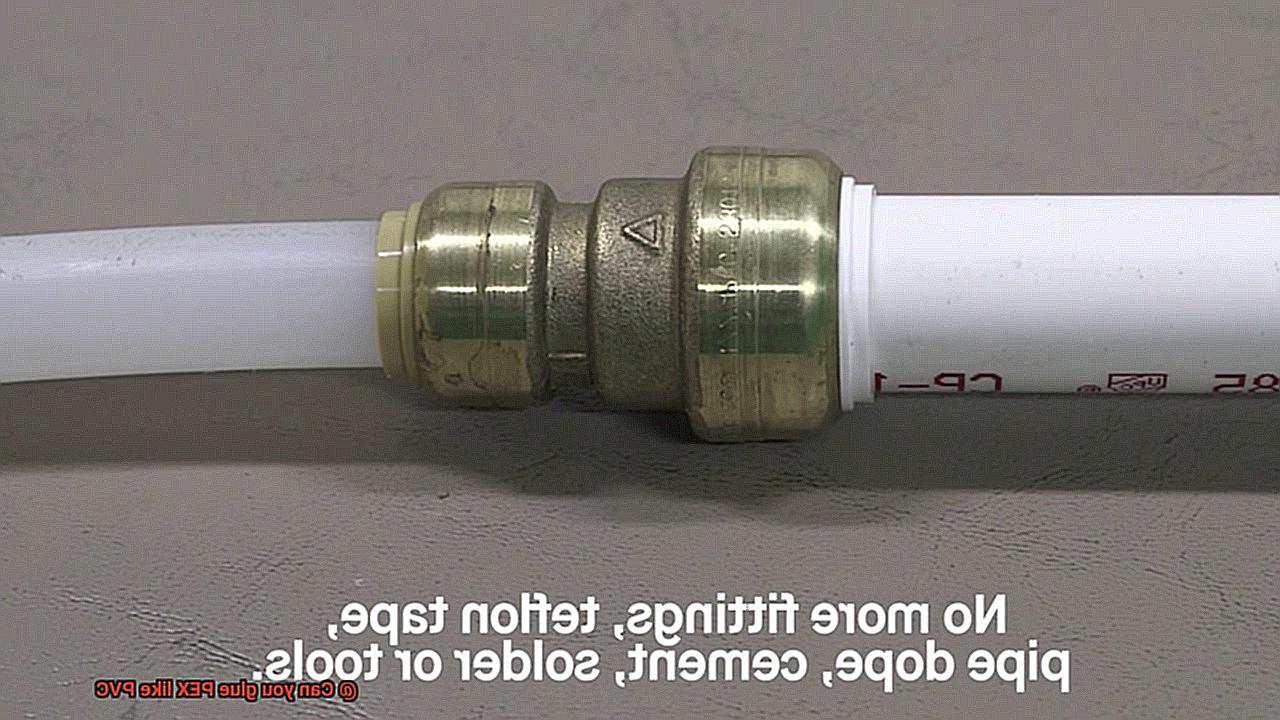
So buckle up and prepare for a wild ride as we unravel the truth about gluing PEX and PVC pipes together. By the time we’re done, you’ll be armed with all the knowledge you need to tackle any plumbing challenge that comes your way. Let’s get started.
Different Properties of PEX and PVC
Contents
- 1 Different Properties of PEX and PVC
- 2 Joining Methods for PEX and PVC
- 3 Why Gluing PEX Like PVC is Not Recommended
- 4 Potential Problems with Gluing PEX Like PVC
- 5 The Right Way to Join PEX and PVC
- 6 Advantages of Using the Right Joining Method for PEX and PVC
- 7 Common Mistakes to Avoid When Joining PEX and PVC
- 8 Tips for Properly Joining PEX and PVC
- 9 Conclusion
PEX (cross-linked polyethylene) and PVC (polyvinyl chloride) are two widely used materials in plumbing and construction. While they both have their own advantages and applications, there is one significant difference between them when it comes to installation: the ability to be glued.
PVC pipes are renowned for their rigidity and are often joined together using solvent cement or adhesive glue. The solvent cement softens the PVC material, allowing for a strong bond when the pieces are pressed together. This method has proven effective for PVC pipes, making it a popular choice among plumbers and DIY enthusiasts.
In contrast, PEX pipes cannot be glued using traditional PVC adhesive glue. This is due to the difference in chemical composition and surface properties of the two materials. PEX pipes have a smooth surface that does not allow adhesive glue to bond effectively. Furthermore, the chemical composition of PEX does not react with the solvent in PVC glue, rendering it ineffective for bonding PEX pipes.
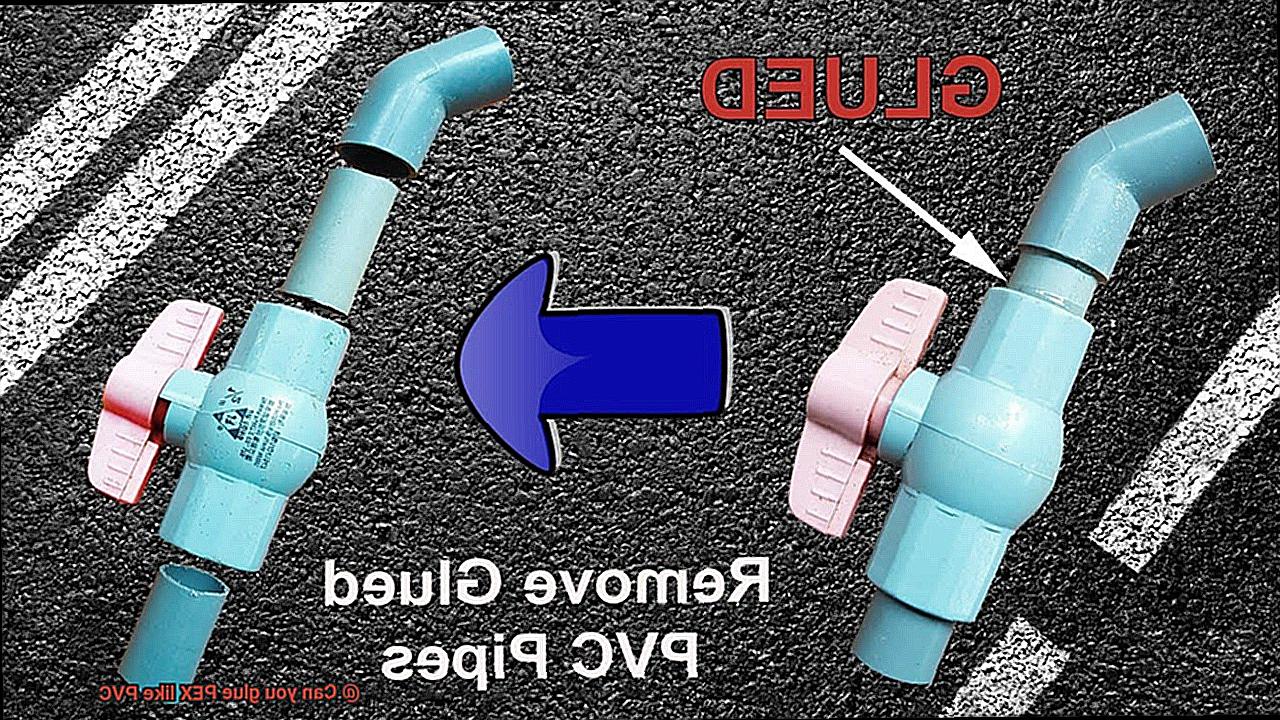
So, if you can’t glue PEX like PVC, how do you join PEX pipes? The answer lies in mechanical fittings. PEX pipes are typically joined using crimp or clamp fittings. These fittings create a secure connection by compressing the pipe onto a metal ring or barb fitting. This method ensures a watertight seal and provides reliable connections.
Although there are specific adhesives available on the market designed for joining PEX pipes, it is generally recommended to use mechanical fittings instead. Mechanical fittings offer superior reliability and ease of installation compared to gluing PEX pipes.
Joining Methods for PEX and PVC
In the world of plumbing and construction, PEX and PVC pipes are like two superheroes with their own unique powers. PVC, the seasoned veteran, relies on adhesive glue to create strong connections. PEX, the newcomer, prefers the strength and reliability of mechanical fittings. Let’s take a closer look at these joining methods and discover which one reigns supreme.
PVC pipes have been saving the day in plumbing projects for years, thanks to their secret weapon: adhesive glue. This superhero glue, also known as solvent cement, combines adhesive and primer to soften the PVC pipe and fitting surfaces. When applied correctly, it creates a powerful bond that can withstand even the harshest conditions. But like any superhero power, adhesive glue has its limitations. It requires careful preparation and application for a successful bond. Plus, it takes time to dry and harden before the pipe can be used, which can slow down your project.
Now, let’s meet PEX pipes, the rising star in the plumbing scene. These flexible pipes boast durability and easy installation. When it comes to joining PEX pipes, mechanical fittings steal the show. These fittings come in different types: crimp fittings, clamp fittings, and push-fit fittings.
Crimp fittings involve using a special crimping tool to compress a metal ring over the PEX pipe and fitting. This creates a connection so secure it’s like a superhero’s unbreakable grip. Clamp fittings work similarly but use stainless steel clamps instead of metal rings. And then there are push-fit fittings – the true superheroes of PEX connections. With built-in O-rings, they create a tight seal when the PEX pipe is inserted into the fitting, without the need for any tools or additional materials.
But why can’t we just use glue for PEX pipes like we do for PVC? It’s all about chemistry. The chemical composition of PEX does not allow for solvent cement or glue to bond effectively with the material. Attempting to glue PEX can result in weak or unreliable connections that may fail over time. So, if you want to harness the full power of PEX pipes, stick to mechanical fittings.
Why Gluing PEX Like PVC is Not Recommended
Gluing PEX pipes like PVC may seem tempting, but let me tell you why it’s not recommended. PEX (cross-linked polyethylene) and PVC (polyvinyl chloride) pipes may both be plastic, but they have distinct differences that dictate their joining methods.
Firstly, PEX pipes are best connected using crimping or compression fittings. These fittings create a secure and reliable connection that can handle the test of time. On the other hand, PVC pipes are commonly glued together using solvent cement. While this works for PVC, it’s a big no-no for PEX.
Why? Well, let’s dive into the nitty-gritty details. PEX pipes are designed to expand and contract with temperature changes, unlike rigid PVC pipes. Gluing PEX pipes can cause stress on the joints, potentially leading to cracks or leaks in your plumbing system. And trust me, nobody wants to deal with a messy plumbing disaster.
Chemically speaking, PEX and glue just don’t mix well. The composition of PEX doesn’t allow for effective bonding with glue. It’s like trying to blend water and oil – it’s just not going to happen smoothly.
Lastly, gluing PEX pipes can turn future modifications or repairs into a real headache. Unlike mechanical fittings used with PEX, glued joints are not easily removable. So if you need to disassemble or modify your plumbing system down the road, you might find yourself in quite a sticky situation (pun intended).
To ensure a secure and reliable plumbing system that is less prone to leaks or failures, it’s crucial to follow the manufacturer’s instructions and guidelines when working with PEX pipes. Stick to crimping or compression fittings, and you’ll have a superhero plumbing system that won’t let you down.
Potential Problems with Gluing PEX Like PVC
Think again. While it may seem like a convenient solution, gluing PEX like PVC can unleash a torrent of potential problems that could transform your plumbing system into a chaotic nightmare. In this article, we’ll delve into the reasons why using PVC glue on PEX pipes is a recipe for disaster and why it’s crucial to adhere to the recommended installation methods.
Chemical Incompatibility:
PEX and PVC pipes may both be made of plastic, but they possess distinct differences that render them incompatible when it comes to gluing. The chemicals found in PVC glue can react with the PEX material, leading to its gradual degradation over time. This chemical reaction weakens the pipe joints, paving the way for leaks or even catastrophic pipe failure. Picture trying to mix water and oil – they simply refuse to blend harmoniously.
Lack of Reliability:
PEX pipes rely on mechanical connections such as compression fittings or crimp rings, which create a secure seal and thwart leaks. However, gluing PEX pipes together with PVC adhesive lacks the same level of reliability. The glued joints may fail to provide a sturdy connection, resulting in leaks or other frustrating plumbing conundrums. Moreover, if you ever need to make adjustments or repairs down the line, disassembling glued joints becomes an exasperating ordeal compared to the effortless ease of mechanical fittings used with PEX.
Voiding Warranties and Certifications:
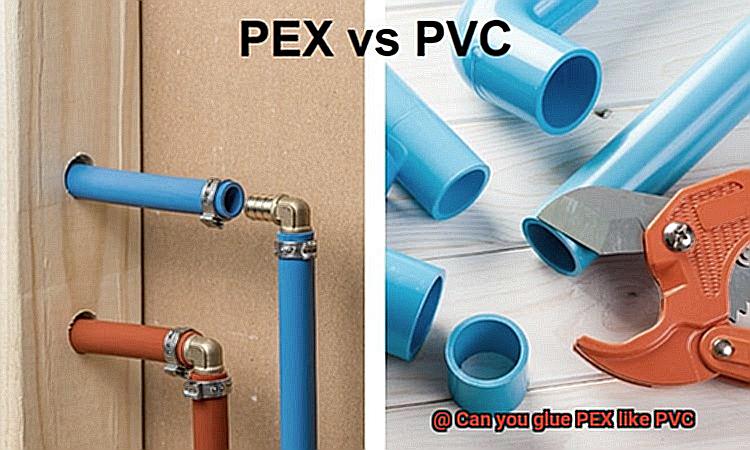
Using PVC glue on PEX pipes also holds the potential to void any manufacturer warranties or certifications for your piping system. Manufacturers provide specific installation guidelines for PEX pipes, and straying from these instructions can have serious consequences. It is absolutely critical to follow their recommendations in order to ensure a safe and reliable plumbing system.
The Right Way to Join PEX and PVC
When it comes to joining PEX and PVC pipes, it’s important to understand that these two materials require different methods for a secure connection. While PVC pipes are traditionally joined using solvent-based cement, PEX pipes require crimp or push-fit fittings. In this guide, we will explore the proper techniques to join PEX and PVC, ensuring a reliable and long-lasting plumbing system.
Using Transition Fittings:
One popular method for joining PEX and PVC is through the use of transition fittings. These fittings have a PEX side and a PVC side, providing a secure connection between the two types of pipes. You can easily find them in various sizes at your local plumbing supply store, catering to different pipe diameters. Here’s a step-by-step guide:
- Cut your PEX and PVC pipes to the desired lengths.
- Deburr the cut ends of both pipes to ensure a smooth surface.
- Insert the PEX and PVC pipes into each side of the transition fitting.
- Use appropriate tools or clamps to secure the fitting, ensuring a watertight connection.
Specialized Glues:
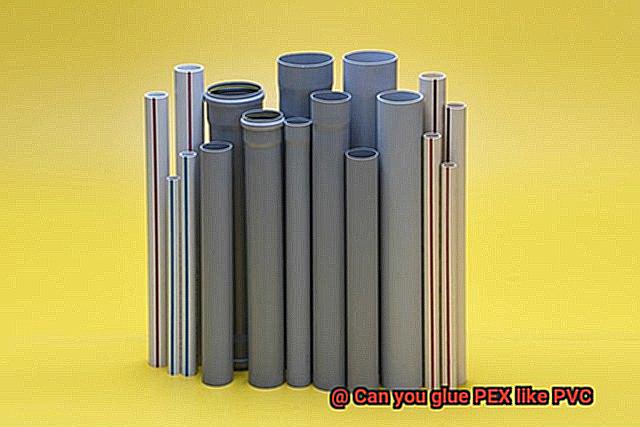
For those looking for alternative options, specialized glues are available specifically formulated for joining PEX and PVC pipes. These glues come with detailed instructions that guide you through the process of achieving a strong bond between the two materials. Before applying any glue, it’s crucial to clean and prepare the surfaces of the pipes for optimal adhesion. Allow sufficient curing time before putting pressure on the connection or introducing water flow.
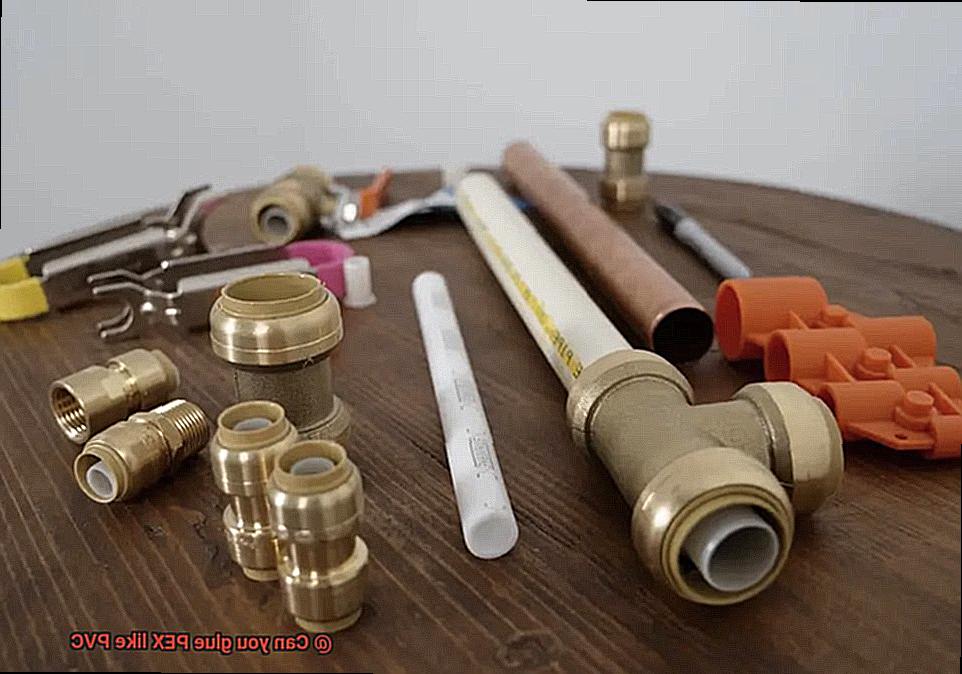
Professional Guidance:
While joining PEX and PVC pipes is possible for DIY enthusiasts, it can be a complex task. If you’re unsure or unfamiliar with the process, it’s always best to consult with a professional plumber or follow specific guidelines provided by manufacturers. Safety and reliability should be your top priorities when it comes to your plumbing system.
Advantages of Using the Right Joining Method for PEX and PVC
Choosing the right joining method is crucial in plumbing systems to ensure long-lasting and leak-free connections. In this blog post, we will explore the advantages of using the appropriate joining method for PEX and PVC pipes. From enhanced durability to time and cost efficiency, understanding the benefits of each method will help you make informed decisions for your plumbing projects.
Advantages of Using the Right Joining Method for PEX and PVC:
Enhanced Durability
Using the correct joining method for PEX and PVC pipes guarantees a strong and durable connection. Solvent welding for PVC and crimping for PEX create reliable bonds that can withstand constant pressure and temperature changes. With a sturdy connection in place, your plumbing system will stand up to everyday use without compromising its integrity.
Leak Prevention
The primary advantage of using the right joining method is leak prevention. Properly joined PEX and PVC pipes significantly reduce the risk of leaks, which can lead to costly damage. By ensuring a tight and secure connection, the right joining method eliminates water seepage, minimizing the chances of leaks occurring and protecting your home or property.
Time and Cost Efficiency
Using the appropriate joining method for PEX and PVC pipes can save both time and money. These methods are designed to be quick and efficient, allowing for easy installation or repair work. Crimping PEX connections requires minimal tools and can be done swiftly, while solvent welding for PVC provides a fast and permanent bond. By using the right joining method, plumbers can complete projects more efficiently, reducing labor costs and minimizing downtime.
Versatility
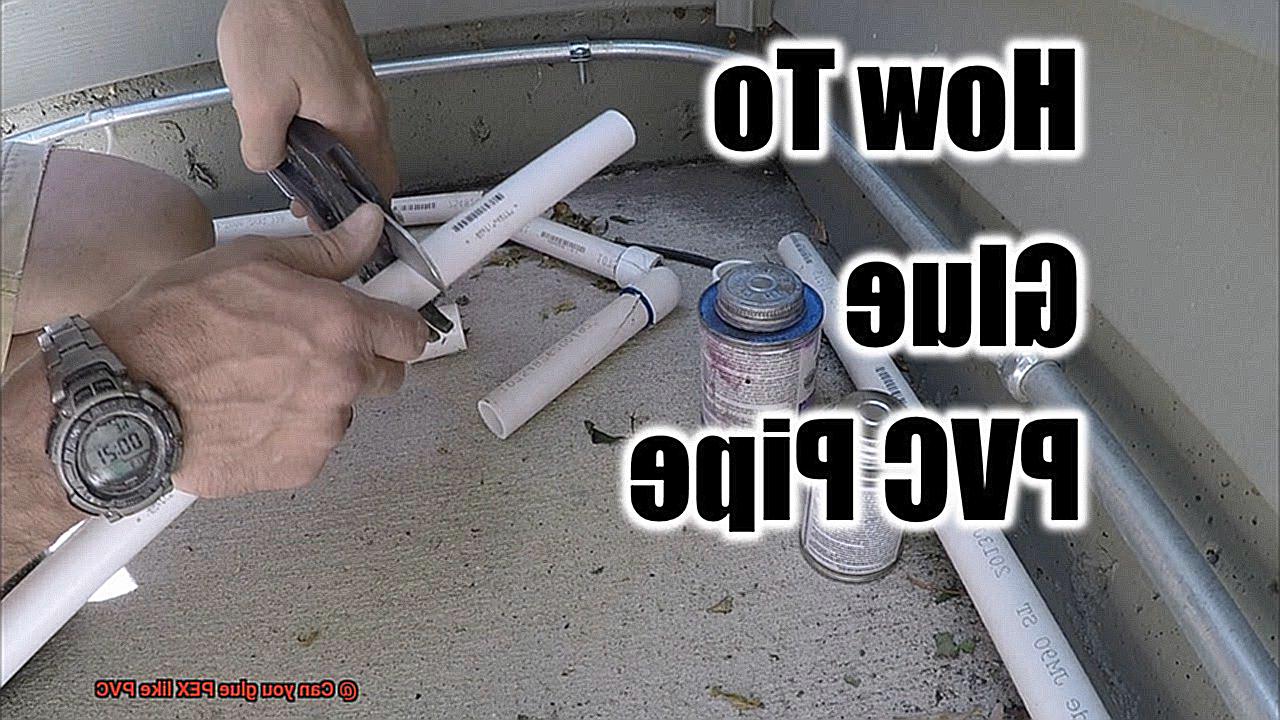
Different joining methods offer versatility when connecting PEX and PVC pipes. PEX pipes can be joined using techniques such as crimping, clamping, or push-fit connections, depending on project requirements. Similarly, PVC pipes can be joined through solvent welding, threaded connections, or mechanical couplings. This versatility allows plumbers to choose the most suitable joining method based on factors like pipe size, application, and accessibility.
Compatibility

The right joining method ensures compatibility between PEX and PVC pipes and other plumbing components like fittings and valves. Each joining method is designed to work seamlessly with specific pipe materials, ensuring a secure and leak-free connection. By using the correct joining method, you can guarantee that all components of your plumbing system will work together efficiently, without any compatibility issues that could compromise functionality.
Common Mistakes to Avoid When Joining PEX and PVC
Joining PEX and PVC pipes may seem like a straightforward task, but making a few common mistakes can result in frustrating leaks and weak connections. As an expert in the field, I’m here to guide you through the dos and don’ts of joining these two pipe materials. In this blog post, we’ll delve into the common mistakes to avoid when joining PEX and PVC pipes, ensuring a secure and long-lasting connection.
Using the wrong type of glue or adhesive:
PVC pipes require a specific solvent cement designed explicitly for bonding PVC materials together. On the other hand, PEX pipes are typically joined using a crimp or clamp system. Applying PVC glue on PEX pipes won’t provide a secure connection, leading to pesky leaks or separations. Always use the correct adhesive for each pipe material to guarantee a reliable bond.
Failing to properly prepare the pipe surfaces:
Cleanliness is paramount for a successful joint. Both PEX and PVC pipes must be rid of dirt, debris, and moisture before they can be connected. Take the time to thoroughly clean the pipe surfaces and ensure they are dry, creating an effective bond that will withstand the test of time.
Improper pipe sizing:
Mismatched sizes of fittings and connectors can result in leaks, reduced flow rates, and weakened connections. Don’t take this step lightly – double-check the pipe sizes and use appropriate fittings to ensure a proper fit. Compromising on proper sizing will directly impact the integrity of your joint.
Applying excessive force during connection:
While it’s crucial to apply enough pressure to create a secure joint, using too much force can lead to catastrophic consequences. Pipes and fittings can crack, resulting in leaks or complete failure of the joint. Follow the manufacturer’s instructions meticulously to apply just the right amount of force during the connection process, striking the perfect balance.
Neglecting to perform a pressure test:
After joining PEX and PVC pipes, it’s vital to conduct a pressure test to identify leaks or weak points before regular use. Pressurize the system and meticulously inspect all connections for any telltale signs of leakage. By identifying and repairing potential issues early on, you’ll prevent further damage and ensure a seamless experience.
Tips for Properly Joining PEX and PVC
Understand the Differences: PEX and PVC pipes are made of different materials with distinct properties. PEX is a flexible plastic tubing known for durability and resistance to corrosion, while PVC is a rigid pipe commonly used for drain and sewer systems. It is crucial to understand these differences to select the appropriate joining methods.
Choose the Right Connectors

PEX pipes require crimp or push-fit fittings, while PVC pipes use solvent-weld fittings. Ensure you have the correct connectors for each type of pipe to ensure compatibility and a secure seal.
Prepare the Pipes
Before joining, clean and prepare the ends of the pipes. Use a PEX pipe cutter for clean, square cuts on PEX pipes, and a PVC pipe cutter or hacksaw for straight cuts on PVC pipes.
Follow Manufacturer’s Instructions
Each type of connector or adhesive has specific instructions provided by the manufacturer. Read and follow these instructions carefully to ensure proper surface preparation, application, and curing time.
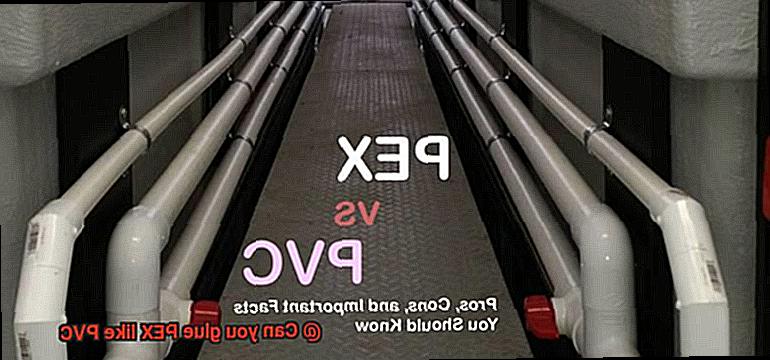
Use the Right Technique
For PEX pipes, use a crimping tool or push-fit fitting to create a secure connection. Crimp fittings involve compressing a metal ring onto the PEX pipe and fitting, while push-fit fittings allow for easy installation by pushing the pipe into the fitting until it clicks into place. For PVC pipes, apply primer and PVC cement to chemically fuse the pieces together.
Allow Sufficient Cure Time
After joining, give the connections enough time to cure properly. This can range from 30 minutes to 24 hours, depending on the product and environmental conditions. Follow the manufacturer’s recommendations to ensure a strong bond.
mmsyAz7b0AM” >
Conclusion
When it comes to the question of whether you can glue PEX like PVC, the answer is a resounding no. Unlike PVC, which can be easily glued using solvent cement, PEX requires a different method of connection. Instead of relying on glue, PEX is typically joined using crimp or clamp fittings. These fittings create a secure and watertight connection without the need for adhesives.
The reason why PEX cannot be glued like PVC is due to its material composition. PEX is made from cross-linked polyethylene, which offers excellent flexibility and durability. However, this material does not bond well with traditional glues or solvents. Attempting to glue PEX pipes together would result in a weak and unreliable connection that could lead to leaks or failures.
Fortunately, the use of crimp or clamp fittings makes joining PEX pipes a straightforward process. These fittings are designed specifically for use with PEX and provide a secure and long-lasting connection. By using the appropriate tools and following proper installation techniques, you can ensure that your PEX plumbing system functions flawlessly for years to come.
In conclusion, while PVC pipes can be easily glued together using solvent cement, the same cannot be said for PEX pipes. The unique properties of PEX require a different approach to achieve reliable connections. By understanding the differences between these materials and utilizing the correct methods of joining them, you can ensure a successful plumbing project that meets all safety standards.

